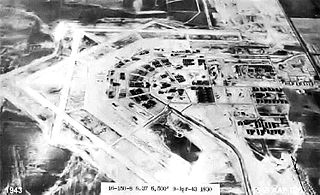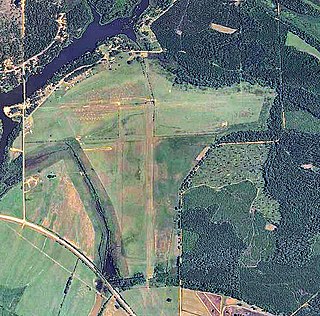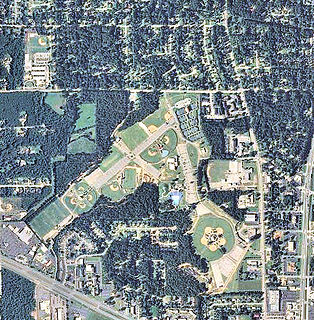
During World War II, Kansas was a major United States Army Air Forces (USAAF) training center for pilots and aircrews of USAAF fighters and bombers. Kansas was favored because it has excellent, year-round flying conditions. The sparsely populated land made ideal locations for gunnery, bombing, and training ranges.

During World War II, the United States Army Air Forces (USAAF) established numerous airfields in Alabama for antisubmarine defense in the Gulf of Mexico and for training pilots and aircrews of AAF fighters and bombers.

During World War II, the United States Army Air Forces (USAAF) established numerous airfields in Arkansas for training pilots and aircrews of USAAF fighters and bombers.

Imeson Field, also known as Jacksonville Imeson Airport, was the airport serving Jacksonville, Florida, from 1927 until its closing in 1968. It was known as Jacksonville Municipal Airport prior to World War II, Jacksonville Army Airfield when the United States Army Air Forces controlled the facility during World War II, and at its closing the airport was Jacksonville - Thomas Cole Imeson Municipal Airport.

Greenville Air Force Base is a former United States Air Force base in Greenville, Mississippi. It was closed as a military installation in December 1966 and redeveloped into Mid-Delta Regional Airport.

Stuttgart Army Airfield is a former World War II military airfield, located 7 miles north of Stuttgart, Arkansas. It operated as an advanced pilot training school for the United States Army Air Forces from 1942 until 1945.

Anniston Air Force Base is a former United States Air Force airfield located approximately 10 miles north-northeast of Talladega, Alabama. It was active from 1942 to 1945 and 1949 to 1952. It is currently the site of the Talladega Superspeedway.

Fort Sumner Municipal Airport is a village owned, public use airport located two nautical miles (4 km) northeast of the central business district of Fort Sumner, a village in De Baca County, New Mexico, United States. It is included in the National Plan of Integrated Airport Systems for 2011–2015, which categorized it as a general aviation airport.

Vaughn Airport is an abandoned airport located 9 miles south-southeast of Columbus, Mississippi.

Henderson Airport is a closed airport located two miles (3.2 km) north-northeast of Millers Ferry, Alabama. During World War II, it operated as Henderson Auxiliary Field.

Henderson Auxiliary Field is a closed facility of the United States Army that is located two miles (3.2 km) north-northeast of Millers Ferry, Alabama. Following its closure, it was reopened as Henderson Airport.

Tallassee Airport is closed airport located 4 miles south of Tallassee, Alabama.

Dothan Municipal Airport is a closed airport located 3 miles (5 km) west-northwest of Dothan, Alabama, United States.
Furniss Auxiliary Field is a former facility of the United States Army Air Forces located in Orrville, Alabama. Constructed after 1941 as an auxiliary to the nearby Craig Field, it was turned back into farmland after the war.
Mollette Auxiliary Field is a former facility of the United States Army Air Forces located in Orrville, Alabama. Constructed after 1941 as an auxiliary to the nearby Craig Field, it was turned back into farmland after the war.
Autaugaville Auxiliary Field is a former facility of the United States Army Air Forces located in Autaugaville, Alabama. Constructed after 1941 as an auxiliary to the nearby Craig and Maxwell Fields, it was turned back into farmland after the war.
McLemore Auxiliary Field is a former facility of the United States Army Air Forces located in Montgomery, Alabama. Constructed after 1941 as an auxiliary to the nearby Craig Field, it was turned back into farmland after the war.
Elmore Auxiliary Field is a former facility of the United States Army Air Forces located in Montgomery, Alabama. Constructed after 1941 as an auxiliary to the nearby Gunter Field, it was redeveloped into Wetumpka Municipal Airport after the war.
Troy Auxiliary Field is a former facility of the United States Army Air Forces located in Troy, Alabama. Constructed after 1942 as an auxiliary to the nearby Maxwell Field, it was turned into Troy Municipal Airport after the war.

















